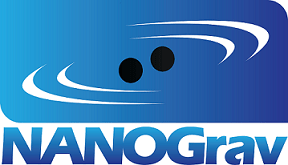Գրավիտացիոն ալիք was directly detected for the first time in 2015 after a century of its prediction by Einstein’s General Theory of Relativity in 1916. But, the continuous, low frequency Գրավիտացիոն-wave Background (GWB) that is thought to be present throughout the տիեզերք has not been detected directly so far. The researchers at North American Nanohertz Observatory for Գրավիտացիոն ալիքներ (NANOGrav) have recently reported detection of a low-frequency signal that could be ‘Gravitational-wave Background (GWB)’.
Հարաբերականության ընդհանուր տեսությունը, որը առաջարկել է Էյնշտեյնը 1916 թվականին, կանխատեսում է, որ տիեզերական խոշոր իրադարձությունները, ինչպիսիք են գերնոր աստղերը կամ դրանց միաձուլումը. Սեւ խոռոչներ պետք է արտադրել գրավիտացիոն ալիքներ that propagate through the Տիեզերք. Earth should be awash with գրավիտացիոն ալիքներ from all directions all the time but these are undetected because they become extremely weak by the time they reach earth. It took about a century to make a direct detection of gravitational ripples when in 2015 LIGO-Virgo team was successful in detecting գրավիտացիոն ալիքներ produced due to merger of two Սեւ խոռոչներ situated at a distance of 1.3 billion light-years from the Earth (1). Սա նաև նշանակում էր, որ հայտնաբերված ալիքները տեղեկատվություն էին կրում տիեզերական իրադարձության մասին, որը տեղի է ունեցել մոտ 1.3 միլիարդ տարի առաջ:
2015-ին առաջին հայտնաբերումից ի վեր, լավ թվով գրավիտացիոն ալիքներ have been recorded till date. Most of them were due to merger of two Սեւ խոռոչներ, few were due to collision of two neutron stars (2). All detected գրավիտացիոն ալիքներ so far were episodic, caused due to binary pair of Սեւ խոռոչներ or neutron stars spiralling and merging or colliding with each other (3) և բարձր հաճախականությամբ, կարճ ալիքի երկարությամբ (միլիվայրկյաններով):
However, since there is possibility of large number of sources of գրավիտացիոն ալիքներ է տիեզերք hence many գրավիտացիոն ալիքներ together from all over the տիեզերք may be continuously passing through the earth all the time forming a background or noise. This should be continuous, random and of low frequency small wave. It is estimated that some part of it may even have originated from the Big Bang. Called Գրավիտացիոն-wave Background (GWB), this has not been detected so far (3).
But we may be on the verge of a breakthrough – the researchers at the North American Nanohertz Observatory for Գրավիտացիոն ալիքներ (NANOGrav) have reported detection of a low-frequency signal that could be ‘Gravitational-wave Background (GWB) (4,5,6).
Unlike LIGO-virgo team who detected gravitational wave from individual pairs of Սեւ խոռոչներ, NANOGrav team have looked for persistent, noise like, ‘combined’ gravitational wave created over very long period of time by countless blackholes է տիեզերք. The focus was on ‘very long wavelength’ gravitational wave at the other end of ‘gravitational wave spectrum’.
Ի տարբերություն լույսի և այլ էլեկտրամագնիսական ճառագայթների, գրավիտացիոն ալիքները հնարավոր չէ դիտել անմիջապես աստղադիտակով:
NANOGrav թիմն ընտրեց միլիվայրկյան pulsars (MSPs) that rotate very rapidly with long term stability. There is steady pattern of light coming from these pulsers which should be altered by the gravitational wave. The idea was to observe and monitor an ensemble of ultra-stable millisecond pulsars (MSP) for correlated changes in the timing of the arrival of the signals at the Earth thus creating a “Հարդագողի ճանապարհ-sized” gravitational-wave detector within our own Հարդագողի ճանապարհ. The team created a pulsar timing array by studying 47 of such pulsars. The Arecibo Observatory and the Green Bank Telescope were the ռադիո telescopes used for the measurements.
Մինչ այժմ ստացված տվյալների հավաքածուն ներառում է 47 MSP և ավելի քան 12.5 տարվա դիտարկումներ: Ելնելով դրանից՝ հնարավոր չէ վերջնականապես ապացուցել GWB-ի ուղղակի հայտնաբերումը, թեև հայտնաբերված ցածր հաճախականության ազդանշանները շատ են վկայում դրա մասին: Հավանաբար, հաջորդ քայլը կլինի ավելի շատ պուլսարներ ներառել զանգվածում և ավելի երկար ժամանակ ուսումնասիրել դրանք՝ զգայունությունը բարձրացնելու համար:
Ուսումնասիրելու համար տիեզերք, scientists were exclusively dependant on electromagnetic radiations like light, X-ray, ռադիո wave etc. Being completely unrelated to electromagnetic radiation, detection of gravitational in 2015 opened a new window of opportunity to scientists to study celestial bodies and understanding the տիեզերք especially those celestial events which are invisible to electromagnetic astronomers. Further, unlike electromagnetic radiation, gravitational waves do not interact with matter hence travel virtually unimpeded carrying information about their origin and source free of any distortion.(3)
Detection of Gravitational-wave Background (GWB) would broaden the opportunity further. It may even become possible to detect the waves generated from Big Bang which may help us understand origin of տիեզերք in a better way.
***
Հիշատակում:
- Castelvecchi D. and Witze A., 2016 թ. Վերջապես հայտնաբերվեցին Էյնշտեյնի գրավիտացիոն ալիքները: Nature News 11 փետրվարի 2016թ. DOI: https://doi.org/10.1038/nature.2016.19361
- Castelvecchi D., 2020. Ինչ են բացահայտում 50 գրավիտացիոն ալիքային իրադարձությունները Տիեզերքի մասին: Nature News Հրապարակվել է 30 թվականի հոկտեմբերի 2020-ին: DOI: https://doi.org/10.1038/d41586-020-03047-0
- LIGO 2021. Գրավիտացիոն ալիքների աղբյուրներն ու տեսակները. Հասանելի է առցանց՝ հասցեով https://www.ligo.caltech.edu/page/gw-sources Մուտք գործվել է 12 թվականի հունվարի 2021-ին։
- NANOGrav-ի համագործակցություն, 2021թ.: NANOGrav-ը գտնում է ցածր հաճախականության գրավիտացիոն ալիքի ֆոնի հնարավոր «առաջին ակնարկները»: Հասանելի է առցանց՝ հասցեով http://nanograv.org/press/2021/01/11/12-Year-GW-Background.html Մուտք գործվել է 12 թվականի հունվարի 2021-ին
- NANOGrav համագործակցություն 2021. Մամուլի ճեպազրույց – Գրավիտացիոն ալիքի ֆոնի որոնում NANOGrav տվյալների 12.5 տարվա ընթացքում: 11 թվականի հունվարի 2021: Հասանելի է առցանց՝ հասցեով http://nanograv.org/assets/files/slides/AAS_PressBriefing_Jan’21.pdf
- Արզումանյան Զ., և այլք, 2020 թ. NANOGrav 12.5 տարվա տվյալների հավաքածու. որոնել իզոտրոպ ստոխաստիկ գրավիտացիոն ալիքային ֆոն: The Astrophysical Journal Letters, Volume 905, Number 2. DOI: https://doi.org/10.3847/2041-8213/abd401
***






































